Jean Pierre Blanchard made the first balloon flight in the United States in 1793. President George Washington and other officials watched the 46 minute flight, staged in Philadelphia, Pennsylvania. Blanchard landed in New Jersey. Children can read an extensive article on the flight at: Blanchard. Children could also read The First Air Voyage in the United States: The Story of Jean-Pierre Blanchard by Alexandra Wallner.
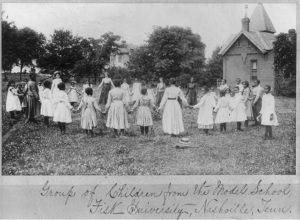
Fisk School
Fisk School opened in 1866. The school’s population was comprised of African Americans because at the time most of them were being denied access to education. General Clinton B. Fisk provided the building in Nashville, Tennessee. The first students ranged in age from 7 to 70. Fisk School became Fisk University in 1867.
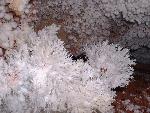
Cave Frostwork and Popcorn
Wind Cave National Park was established in 1903. The 33,500-acre park, located in South Dakota, hosts a mixed-grass prairie ecosystem with bison, elk, and prairie dogs. Below ground is a barometric wind cave with at least 137 miles of explored passages. The cave is unusually large and was formed by boxwork. Children can visit the park’s website and view some of its great multimedia presentations at: http://www.nps.gov/wica.
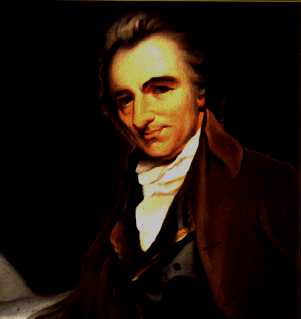
Thomas Paine
Common Sense was published by Thomas Paine in 1776. He first published the 48-page pamphlet anonymously because what he was propounding was treason against England. Some experts believe this small pamphlet was one of the major influences regarding America’s Revolutionary War. At least a half million copies were sold, and the proceeds were donated to George Washington and the Continental Army. Idea: Paine’s words are very stirring. Older children would enjoy reading and discussing some of the passages. The pamphlet can be found at: Project Gutenberg.
League of Nations was formed in 1920. Over 50 countries worked together to try to end war. Permanent nations included France, Italy, Japan, and Great Britain. Later Germany and the Union of Soviet Socialist Republics became permanent members. However, the United States was not a member. The League of Nations ceased to exist in 1946, but it became the basis for the United Nations.
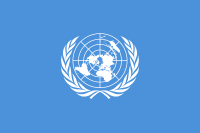
Flag of United Nations
United Nations General Assembly held its first meeting in 1946 in London, England. Founded by 51 countries, the United Nations today is comprised of 193 countries. The four goals are:
• To keep peace between countries
• To develop friendly relationships between countries
• To help the world’s poor through medical and educational programs
• To be a catalyst so that progress can be made
Today the General Assembly meets in New York City. Other branches of the United Nations are located in Geneva, Switzerland, and Vienna, Austria. Children could learn more at: United Nations.
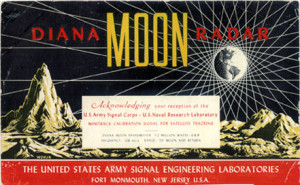
Project Diana
Project Diana was conducted in 1946 by the Army Signal Corps. The group sent radio signals to the moon and recorded the reflected signals (about 468,000 miles to the moon and back). The signals took 2.5 seconds to return to earth. Today called EME (Earth – Moon – Earth), the program started the space program because it was the first time humans sent something beyond the earth’s atmosphere. Project Diana was named after the Roman goddess Diana, the goddess of the hunt and of the moon. Children can learn more at: Project Diana.

Dairy Cow
National Milk Day is today! Perhaps today was chosen for National Milk Day because on this day in 1878 milk was delivered in glass bottles to consumers. See the post below. US citizens consume 226.6 billion pounds of milk per year. That averages as 130 pounds of milk per capita each year. Idea: Children could research and list products that are made from milk, for example butter, cheese, ice cream. They could prepare a snack of their favorite milk products.

A bit of Uranus and some of its moons. Titania and Oberon are the last two on the right.
William Herschel discovered Titania and Oberon, the two largest moons of Uranus, in 1787. Herschel, a German-born astronomer who had moved to England, discovered Uranus in 1781. Today we know Uranus has 27 moons and a ring! Herschel named the two moons after characters in Shakespeare’s “Midsummer Night’s Dream.” Children can learn more about the moons of Uranus at: Moons of Uranus.
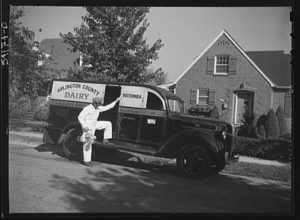
milk delivered in bottles
Milk was delivered in glass bottles for the first time in 1878. Alexander Campbell of New York brought milk to his customers in sealed bottles. Previously, a milkman ladled milk from his container into the purchaser’s container. Children can learn how milk goes from farm to family at: milk. They could find out why today milk is stored in white containers and not clear bottles.
United States Surgeon General Luther Terry issued the first report, published in 1964, that cigarettes and smoking were health hazards. Idea: Children could make anti-smoking posters and display their works around school. They could visit the D.A.R.E. site at: DARE.